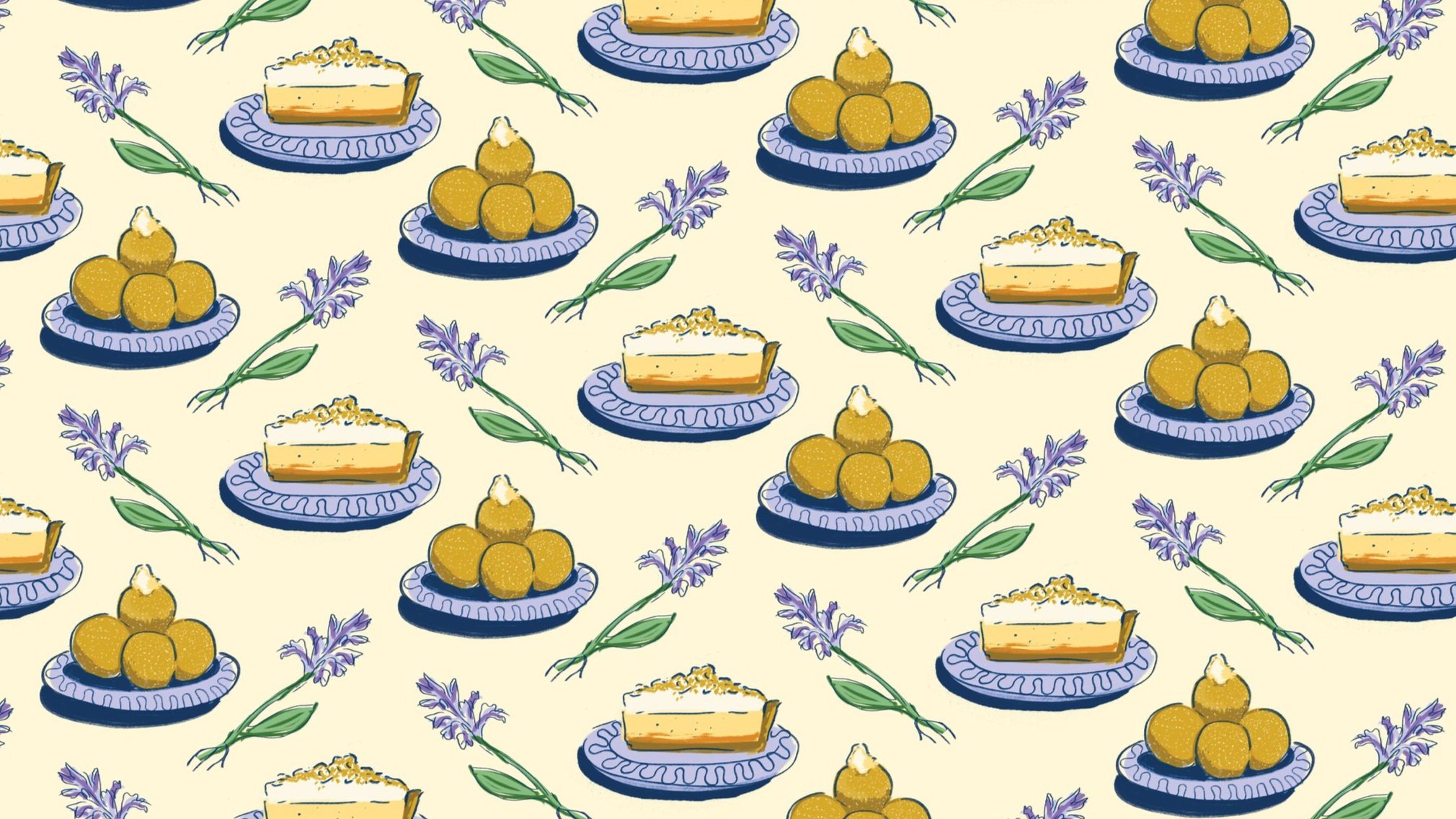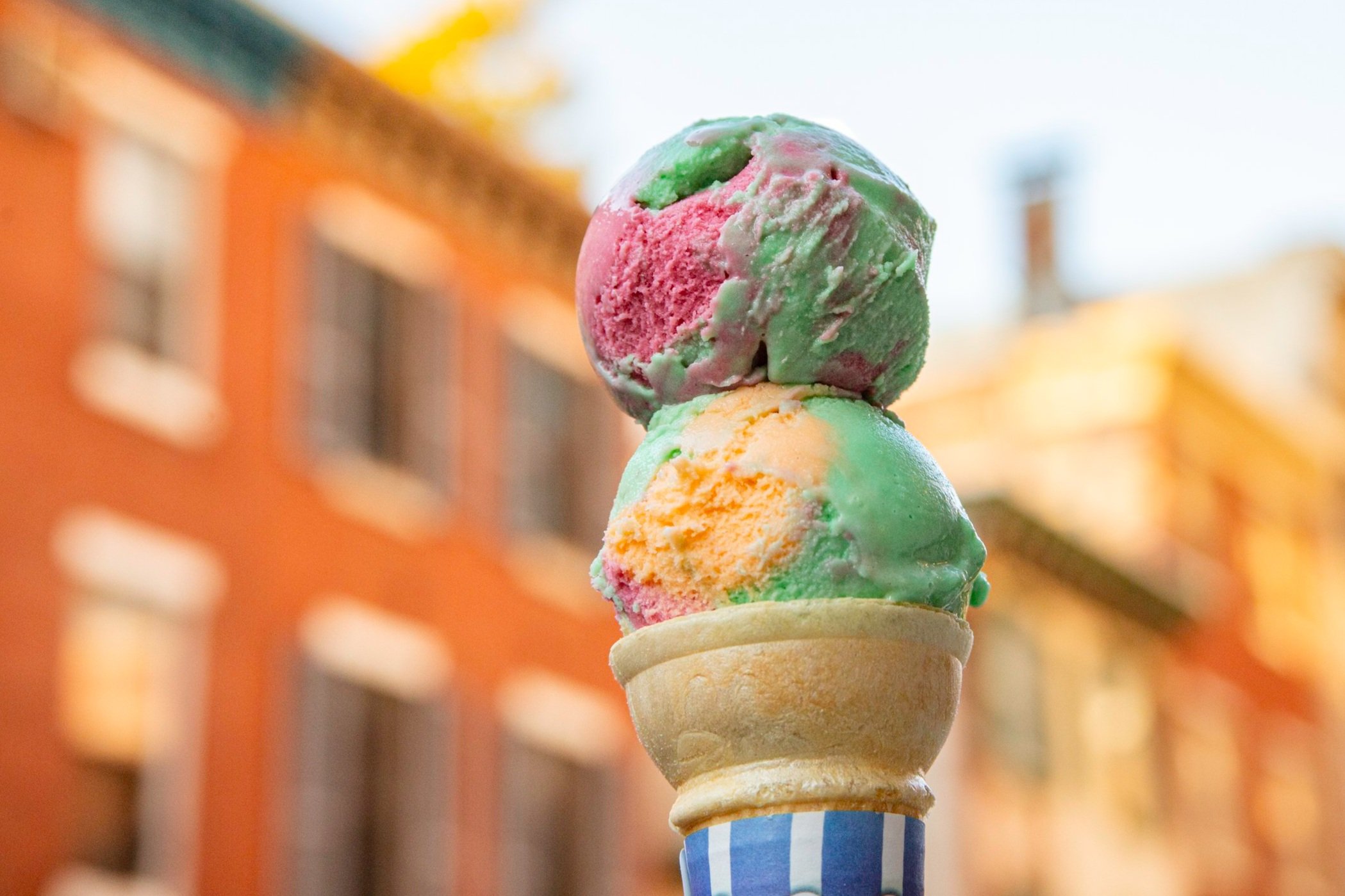Pastry Americana
Erika Chan explores the evolution of American desserts at Dunsmoor.
illustration: rachel krohn
Dunsmoor is built around "American heritage" cookery, which, along with an open fire and everything-by-hand approach, stems from Chef Brian Dunsmoor’s love for the history of American foodways.
American history has shaped dessert traditions too. The Industrial Revolution brought sugar production to the mainstream and, in turn, sweets thrived in the American food industry. Jell-O, instant pudding, layered cakes, and flavored milkshakes were all popularized during this time, and today evoke nostalgia through both taste and presentation. This comforting familiarity, mixed with hyper-seasonal produce, is the feeling I try to capture with desserts at Dunsmoor.
I have always found inspiration hidden in recipes from cultures past and present. By focusing on American heritage desserts, I’ve learned a lot about how history shapes pastry traditions: sweets from the Depression era utilized cheap ingredients such as cornstarch and fruit substitutes in creative ways; after World War II, women joined the workforce, and pastries were developed to emulate luxury and convenience; dive deeper, and you can find regional traditions built around produce specific to certain parts of the country, such as figs and wild persimmons. The creative fun at Dunsmoor comes in both updating these recipes with Southern California ingredients and celebrating these forgotten traditions.
Take ambrosia, for example. If you’re lucky, you might have a taste memory of this traditional Southern Christmas dish of canned fruit, coconut, Cool Whip, nuts, marshmallows, and sour cream. During the late 1800s, the manufacturing of fruits and coconut allowed for the widespread availability of previously ‘exotic’ products, and ambrosia salad became a popular way to enjoy them.
The challenge for me was how to make this quintessentially American dessert, that is clunky and not seasonal, relevant to the Dunsmoor menu. I wanted to preserve the textures from the nuts, marshmallows, fruit, and ‘whippy’ things that make ambrosia unique. Wong Farms grows incredible mangoes during late summer, of which my favorites are the Keitt and Valencia Pride varieties. Cubes of mango replaced the usual canned pineapple and cherries. The tropical flavor of coconut is essential to ambrosia, but my personal aversion to it led me to fig leaves, which lend the nutty, vanilla-y aromatic flavor of coconut. I picked leaves from the fig tree in our parking lot and steeped them in a sugar syrup to make marshmallows for the ambrosia. Candied pecans satisfied the nut component. I infused vinegar with the mango peels and pits and used that to make sour cream, which then became a sour cream mousse to tie it all together. The hope is that, subliminally or not, the finished dessert triggers a familiarity to guests who have had ambrosia. And to those who haven’t, it is simply a delicious end to an American heritage meal.
Erika Chan is the former pastry chef of Dunsmoor and is currently living in Nashville, TN.







